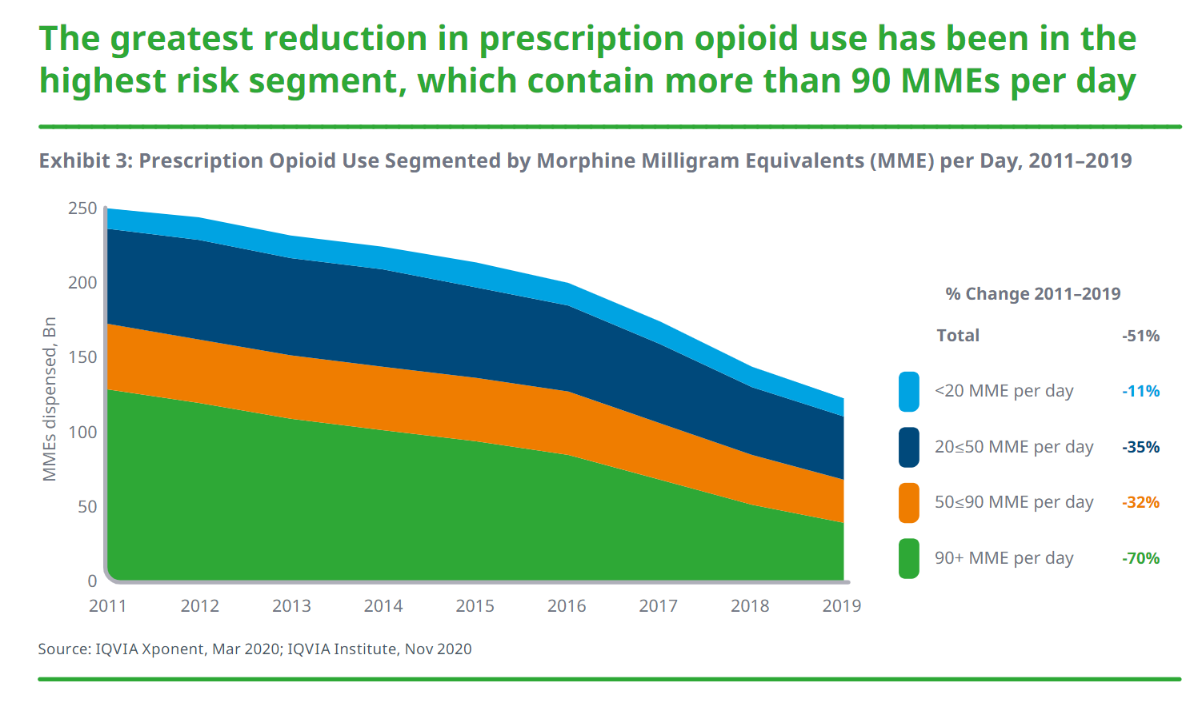Report: US Prescription Opioid Use Plummets From 2011 Peak
US prescription opioid use dropped 60% from its peak volume in 2011, according to a new report from the IQVIA Institute for Human Data Science.

US prescription opioid use dropped 60% from its peak volume in 2011, according to a new report from the IQVIA Institute for Human Data Science.1
The significant declines over the past 9 years have been driven by changes in clinical use, regulatory and reimbursement policies, and progressively more restrictive legislation enacted since 2012, IQVIA said in a news release about the report.
Notably, the declines have been greatest in the highest doses of prescription opioids—over 90 morphine milligrams equivalents per day—which present the highest risk of opioid use disorder.

“These significant decreases are evidence of the positive impact of the collective efforts to reduce the use of prescription opioids by the medical community, public health authorities, and legislators at the state and federal levels,” said Haiden Huskamp, Henry J. Kaiser professor of health care policy at Harvard Medical School. “Reducing the overuse and misuse of prescription opioids continues to be an important public health priority both during the COVID-19 pandemic and beyond.”
The coronavirus disease 2019 (COVID-19) pandemic—and resulting lockdowns and reduced surgeries—affected opioid prescribing levels at the start, but these levels appeared to have rebounded. New opioid prescribing levels fell sharply in March and April to approximately 50% of baseline, whereas continuing prescriptions fell by 6%, IQVIA said. However, all prescriptions returned to baseline levels in June.
The pandemic also influenced the use of medication-assisted treatment (MAT)—which includes buprenorphine, naltrexone, and other medications, but excludes methadone—this year. New prescription regimens dropped as much as 22% in April and May, yet rebounded from June to September.
New prescriptions for MAT began to weaken since then, “and are likely to result in an interruption to the increase in MAT use seen in recent years,” according to IQVIA.
The report also draws attention to the risks of co-prescribing benzodiazepines and opioids in the elderly population. “About 1.2 million Americans over the age of 65 are estimated to be receiving a combination regimen and therefore at an increased risk of abuse and/or death,” IQVIA said in the news release.
This number has declined from approximately 1.7 million in 2016, a lower rate of decline than seen in people under 65 years old. Around 18 million seniors are using prescription opioids, benzodiazepines, or a combination, representing about 30% of the 59.4 million total Americans receiving these medicines.

In positive news, opioid prescriptions paid for in cash—seen as an avenue for potential misuse—have fallen from 9% in 2011 to 6% in 2019.
Reference
1. Prescription Opioid Use in the US has Declined by 60% from 2011 Peak, According to New Report from the IQVIA Institute for Human Data Science. News release. IQVIA; December 17, 2020. Accessed December 17, 2020. https://www.iqvia.com/newsroom/2020/12/prescription-opioid-use-in-the-us-has-declined-by-60-from-2011-peak-according-to-new-report-from-the